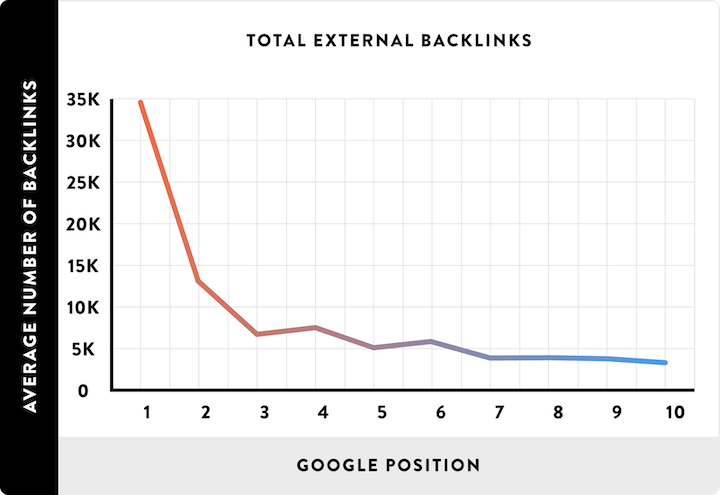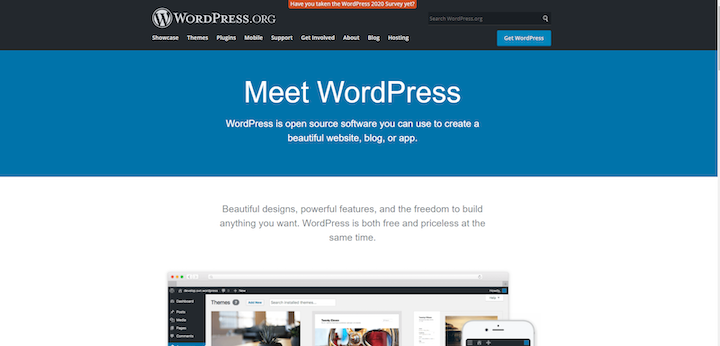The importance of using data to guide your marketing decisions cannot be overstated. Analytics let you know what your strengths and weaknesses are. They provide you with the opportunity to do less of what isn't working and focus more on improving the aspects of your marketing that are bringing real results.
Over 86% of marketers believe content marketing is essential to their operations, but only a small percentage actually understand how to use content analytics effectively in their strategy.

Content analytics can prove invaluable in helping to improve your strategy so you can attract more traffic and leads to your site. That’s why, in this article, we take an in-depth look at how you can use analytics to steer your content strategy. You’ll learn:
- What content analytics are
- Why content analytics are important
- How to use content analytics in your marketing strategy
- How to conduct a content analysis
- What platforms to use for content analysis
What are content analytics?
Some marketers find the topic of content analytics exciting. Others—not so much. If you are in the latter group, here is a simplified explanation of what they are and why they are important.
The topic of content analytics is all about applying business analytics and business intelligence practices to digital content. The term defines a broad range of technologies that process digital content and the way users behave in their consumption and engagement with different types of content, such as:
- Blog posts
- Documents
- Social network discussions
- Customer conversations (both text and audio)
- News sites
- Online course engagement rates
Why are content analytics important?
There are many reasons why content analytics are crucial to your overall strategy. For one, by looking at the right content marketing metrics, you will be able to better understand the value your content delivers (or doesn't deliver).
You’ll know which content works effectively in attracting, retaining, and engaging customers.
In addition to that, you will also gain clarity and deeper insight into your content strategy. You will be better equipped to achieve the following:
- Build alignment: Focusing on key metrics that measure ROI will help you to foster collaboration, teamwork, and drive.
- Improve content marketing: Your content marketing metrics will help you hone in on the elements that are relevant to, and resonate with your customers, allowing you to achieve your company's objectives in the most effective and convenient way.
- Motivate and inspire your team: When you find reliable ways to keep score, you make it more likely that your team will rise to the occasion.
So, which categories should you focus on?
Although there are a lot of content analytics categories that you can track, here are the ones that marketers most commonly focus on:
- Consumption metrics: These include unique visitors, page views, time on page, subscriptions, and so on.
- Retention metrics: You can measure things such as new and returning visitors, bounce rate, social media follower counts, unsubscribes, etc. to see how engaged your audience is.
- Sharing metrics: This includes website shares, blog shares, and online asset shares, as well as social shares.
- Lead metrics: Your leads metrics will show you data to help you attribute leads to specific content or campaigns.
- Sales metrics: You can set up your reports according to analytical needs to measure sales and revenue generated.
- Course engagement rates: For those that have built an online course, you’ll want to make sure your student base stays engaged. There are entire course platforms that will give you extremely detailed information about the courses your students are enrolled in.
How to use analytics in your content strategy
Content analytics should impact your content strategy because your brand needs a plan to know what to write or talk about.
Checking the right analytics metrics will allow you to make smarter content decisions that will help you achieve your content marketing objectives faster.
The data from your customers and prospects will show you how your content is performing at every digital interaction that takes place between your brand and your customers. You can then interpret the information you collect to inform your future content creation efforts.
When you know what works, you can continue to create more great-performing content for your business and avoid wasting valuable resources on content that doesn't bring results. You can also use tools like Instagram analytics tools, LinkedIn analytics tools, etc. to get better insights of your content.
Below, we take a look at how you can interpret the data you collect in order to better inform your content strategy.
How to conduct content analysis
Content analytics comes down to using semantic technologies to unlock business value from unstructured content in order to answer important questions or discover causes to specific trends.
But, how exactly do you conduct content analysis? There are four key areas to focus on in your reporting, and let's go through each of these.
1. Production
This refers to all the content you create for your business. Only 42% of marketers say they’re effective at creating content. When you set production goals and keep track of your content production stats, you will be able to create enough content to fuel your marketing strategy.
You can include any of the following areas, depending on what is proper or essential for your business:
- Author output: You can keep track of the number of content pieces produced by each author
- Content by type: This is the number of blog posts, webinars, ebooks, white papers, YouTube videos, etc.
- Content by persona: This is how many content pieces are targeted at each of your customer personas
- Content by category: This is how many content pieces are in each category in your business
2. Engagement
This is where you measure the amount of digital or social activity any piece of content attracts in order to answer questions like “How involved are the users?” or “Did the content spur a reaction?”
Engagement is a good way to measure how valuable your content is to your audience. The different types of engagement metrics you can track include:
- Page views: The number of times any piece of content is viewed is a good engagement metric.
- Total shares: You can look at the total combined shares from Facebook, LinkedIn, Twitter, Pinterest, etc.
- Comments: Look at the number of comments left on each piece of content.
- Links: Another important engagement metric is the number of backlinks the content got. According to multiple studies, there is a direct correlation between the number of backlinks a content has to its position in the SERPs (search engine results pages).

3. Performance
This refers to the extent to which any piece of content is effective, profitable, and successful at helping you achieve your marketing goals. Performance metrics can be a combination of production and engagement metrics to give you higher-level insight into your content.
You can achieve this by tracking the following:
- Top posts: For instance, you can track the top 10 posts in any given timeframe
- Top authors: Find out which author’s work gets the most audience engagement
- Top categories: Determine popular categories associated with the most content
Are your blog posts underperforming? Try our quick SEO fixes!
4. Content scoring
This is an aggregate number that shows you the effectiveness of any piece of content by using an attribution model. It shows you its performance at converting leads into sales and allows you to determine the ROI of each piece of content. This post goes into more detail on how to conduct content scoring.
You can sort your content scores by:
- Category
- Author
- Conversion
- Content type vs. campaign type
- Revenue generated
...and so on.
Revenue is the ultimate result of content marketing. With content scoring, you have a tool that will help you automatically calculate ROI from every piece of content published so you know which ones are helping to nudge buyers down your sales funnel.
By focusing on these four key areas in your reporting, you will have an effective system for tracking what works best for your particular business, as well as a reliable way to ensure your content marketing team is accountable.
What platforms to use for content analysis
Content analytics software will provide you with detailed insights into your audience's interactions with published content. With the right tools, you will gain visibility and steer your future content strategy toward success.
Here are three content analysis software solutions that can help you achieve this.
1. Unstack

Unstack is a free no-code CMS with the tools to help you build a strong digital presence so you can scale traffic, leads, and sales. The website and landing page builder comes with a wealth of amazing features, including:
- Revenue analytics
- Custom dashboards
- Premier support
- Custom development
Free Version: Yes
Free Trial: Yes
Starting Price: $29.00 per month
2. SEMrush

SEMrush is a great tool for content marketing professionals who want an easy and convenient way to manage their online visibility. With it, you will have the ability to build, manage, track, and measure campaigns across a variety of marketing channels.
This SaaS platform offers solutions for companies of all sizes in all industries and will help you get measurable results from every aspect of your online marketing.
Features include:
- Keyword tracking
- Trend analysis
- Social media monitoring
- Website monitoring
- Competing product analysis
Free Version: Yes
Free Trial: Yes
Starting Price: $99.95 per month
3. WordPress

WordPress is the perfect tool for anyone who needs to create a modern web presence. The software allows you to create a website that meets your exact needs. You can start a blog, portfolio, business website, online store, or anything else that you can imagine. WordPress comes with built-in optimization, as well as responsive, mobile-ready themes.
Features include:
- Analytics
- Collaborative writing
- Post management
- Comments moderation
- WYSIWYG rich text editing
Free Version: Yes
Free Trial: Yes
Starting Price: $2.73 per month
Let content analytics drive your growth strategy
A data-driven content strategy will help you increase your conversions. Without it, you will find it virtually impossible to create a successful content marketing strategy to grow your brand.
Use any of the tools above and implement the tactics outlined in this article to help you conduct content analysis and use it effectively in your content strategy.
About the author
Ron Stefanski is an online business expert and marketing professor who has a passion for helping people create and market their own online business. You can learn more from him by visiting OneHourProfessor.com. You can also connect with him on YouTube or LinkedIn or in his Facebook Community.
